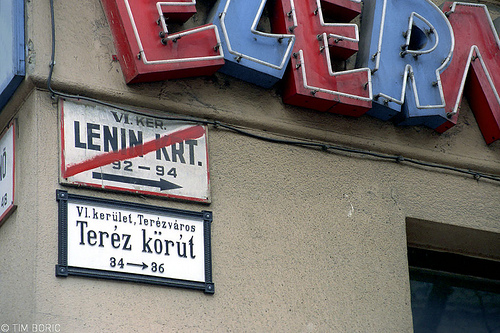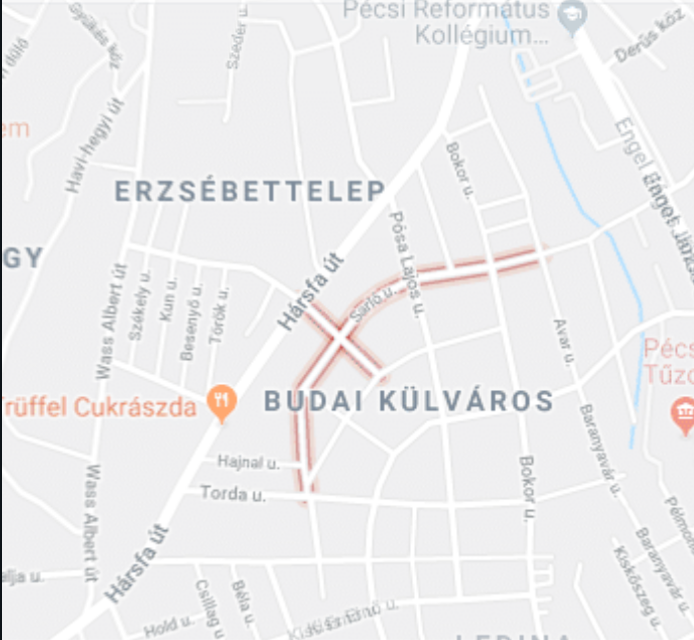
Many countries of the former Soviet bloc struggle to form their new identities since the fall of the Soviet Union, especially when it comes to deciding what to keep and what to lose from socialist economies and societies. Welfare systems and government media are only two examples of main battlefields of this identity crisis, but a far more symbolic, yet also semantic aspect is the renaming of public spaces.
In 1945, as the Red Army not only entered Hungary and ended German occupation but decided to stay. As the country was sucked into the orbit of the Soviet Union, major arterials, important streets, and central squares traded their signs one by one. In some examples, these efforts were to erase the legacy of certain historical figures, usually revolutionists. More prominently however, they created representation for socialist ideology. Budapest’s Lehel Sq, named after a medieval rebel, became The Square of the Outstanding Worker. They even changed plainly named spaces, like Moon St, after the infamous Rosenberg couple for example. Streets named for Lenin, Marx, and Engels appeared all across the country. In the southern city of Pécs, Hammer St and Sickle St crossed each other.

Efforts to reclaim these spaces started in the 1990s, as the Soviet Union fell and Hungary transitioned into a more democratic life. Statues and plaques commemorating most communist and socialist achievement disappeared. People again walk on Moon St and they visit Lehel Sq.
In Pécs, Marx St stuck around for almost 30 years and by that time, no one explicitly minded its presence. Even though they changed it to Albert Wass St—to commemorate an exiled victim of Marx’s ideology—, people continue to call it by its old name. Sickle St now crosses Peony St.
Do these names actually convey historical eras and their politics? Will their messages change if their names do? Should it matter that these names change? Residents of these spaces often have no attachment to the figure their street is named for, or cannot comprehend the actual significance of Stalin (or Lenin, etc.) on past society. On the other hand, how do we preserve the memory of those hurt by the past, such as Wass, and provide space for their representation? Do we need to return to previously used names, if possible? Should generations growing up on Hammer St now call Peony St their home? Similar questions surround municipal policy regarding these public space identities, and often people engaged with the local identity struggle to answer. Many local residents pointed out that their cities have enough to deal with, and these days, Lenin should be the least of it.
Sources
- Somogyi, Magda. “Street Sign Changes in Budapest After 1989” accessed October 21, 2019.
- Ungár, Tamás. “Marx is now Wass, and A Hammer Now Counts as Communist” accessed October 21, 2019.
